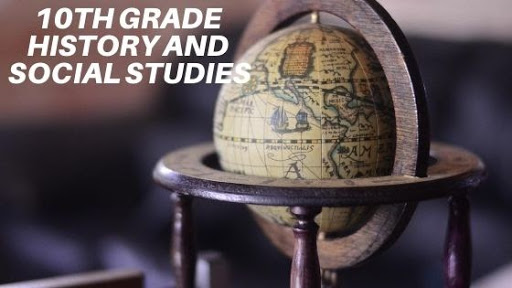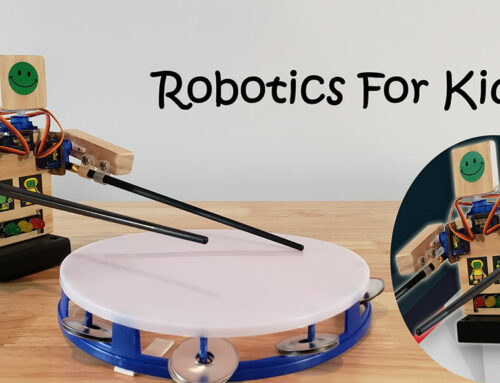Here’s a list of homeschool requirements, competencies, developmental milestones, virtual field trip ideas, and more to get you started and keep you on track once you begin homeschooling 10th grade.
It’s a big year for your 15-year-old! Fine motor skill development is settling down now, and while girls have typically reached maturity, your son may show increased muscle mass as his body continues to grow and mature. You may notice his voice is lower now, and he may even grow some facial hair.
Your teen is thinking about her future more and more as talks of career plans, life and college choices become the norm. Interest in romantic relationships may increase as your teen grows closer to adulthood.
Children who are homeschooled show fewer instances of bullying, anxiety and depression. However, be aware that negative thoughts or emotions could arise during this time as your teen navigates these formative years.
At 15, your child is better able to express his feelings through talking and has the abilities for complex thought so communication as a family is key. Your child also needs plenty of sleep right now. The Center for Disease Control recommends eight to 10 hours of sleep per 24-hour period.
Homeschooling curriculum in the state of Texas must include the five basic subjects of reading, spelling, grammar, mathematics and good citizenship. Science, history, and social studies are also included for you. Not in Texas? Check out state requirements for homeschooling 10th grade in your state.

Suggested School Supplies for 10th Grade
https://www.myschoolsupplylists.com/10th-grade-school-supply-list/
- Pencils
- Pencil sharpener
- Eraser
- Pens
- Lined paper, spiral notebooks, and/or composition notebooks
- Index cards
- Binders (if needed)
- Folders
- Colored pencils
- Highlighters
- White board
- Dry erase markers
- Ruler
- Scissors
- Stapler
- Glue sticks
- White glue
- Tape
- Bookmarks
- Globe
- Wall maps of the world and the United States
- Library card
- 3-hole punch
- Dictionary
- Thesaurus
- Student planner
- Graphing calculator (if needed)
- USB drive (if needed)
- Computer supplies (as needed; paper, ink cartridges)
10th Grade Milestones by Subject

Language Arts for 10th Grade
- Focuses on listening, speaking, reading, writing and thinking
- Able to give a presentation using informal, formal and technical language effectively
- Presentations meet the needs of audience, purpose and occasion
- Uses pauses for effect, volume, enunciation, purposeful gestures, eye contact and conventions of language to communicate effectively
- Participates collaboratively, building on the ideas of others, contributing relevant information, developing a plan for consensus building, and setting ground rules for decision making
- Uses print or digital resources such as glossaries or technical dictionaries to clarify the meaning of technical or discipline-based vocabulary
- Distinguish among denotative, connotative, and figurative meanings of words by using context clues
- Familiar with foreign words or phrases used frequently in English such as pas de deux, status quo, déjà vu, avant-garde, and coup d’état and can explain their meanings
- Reads grade-appropriate texts independently and is able to self-select texts and read independently for a sustained period of time
- Uses metacognitive skills to increase effective study strategies
- Able to plan a piece of writing appropriate for various purposes and audiences by generating ideas through a range of strategies such as brainstorming, journaling, reading, or discussing
- Develops drafts into a focused, structured, and coherent piece of writing
- Revises drafts to improve clarity, development, organization, style, diction, and sentence effectiveness, including use of parallel constructions and placement of phrases and dependent clauses
- Able to edit drafts using standard English conventions
- Incorporates a variety of sentence structures and avoids unintentional splices, run-ons, and fragments
- Uses consistent, appropriate verb tense including active and passive voice
- Uses correct capitalization and punctuation including commas, semicolons, colons, dashes, and parentheses to set off phrases and clauses
- Avoids spelling mistakes
- Compose informational texts such as explanatory essays, reports, and personal essays
- Able to compose correspondence in a professional or friendly structure.
- Able to use source materials ethically to avoid plagiarism
Writing Skills Checklist for 10th Grade
- Writes legibly in print and cursive
- Writes to express feelings, tells stories and summarizes information
- Able to follow complex written directions and write effective directions
- Understands how to use reference materials, takes notes and prepares written reports
- Demonstrates clarity in writing with beginning, middle and end of stories
- Uses grammar and punctuation correctly and effectively in writing
- Can self and peer edit written works
- Able to write based on the needs of the audience or assignment by changing sentence structure, vocabulary and voice
- Consistently uses the appropriate verb tense and pronoun-antecedent agreement
- Uses correct capitalization, punctuation (including commas, semicolons, colons and dashes) and spelling with ease
- Use increased planning strategies to search for and combine information from multiple sources to create longer and more complex works
- Understands the use of citations and footnotes

History and Social Studies for 10th Grade
http://ritter.tea.state.tx.us/rules/tac/chapter113/ch113c.html#113.42
- Able to identify the development of agriculture and river valley civilizations from 8,000 BC to 500 BC
- Identifies major causes and effects of the development of the classical civilizations of Greece, Rome, Persia, India (Maurya and Gupta), China (Zhou, Qin, and Han), and the development of major world religions from 500 BC to AD 600
- Able to describe the major effects of important turning points in world history from 600 to 1450 including the spread of major world religions and their impact on Asia, Africa, and Europe; and the Mongol invasions and their impact on Europe, China, India, and Southwest Asia
- Familiar with important turning points in world history from 1450 to 1750 such as the rise of the Ottoman Empire, the influence of the Ming dynasty on world trade, European exploration and the Columbian Exchange, European expansion, the Renaissance and the Reformation
- Understands and is able to describe the Scientific Revolution and its scientists, the Industrial Revolution and its impact on the development of modern economic systems, European imperialism, and the Enlightenment’s impact on political revolutions from 1750 to 1914
- Identifies major causes and effects major events in our history since 1914 including the world wars and their impact on political, economic, and social systems; communist revolutions and their impact on the Cold War; independence movements; and globalization
- Familiar with and can describe the interactions among Muslim, Christian, Hindu and Jewish societies in Europe, Asia and North Africa
- Understands how the Crusades, the Black Death, and the Hundred Years’ War contributed to the end of medieval Europe
- Understands the causes, characteristics, and impact of the European Renaissance and the Reformation from 1450 to 1750
- Understands the characteristics and impact of the Maya, Inca, and Aztec civilizations including each groups impact on astronomy, mathematics, and architectural engineering
- Understands the impact of the Atlantic slave trade on West Africa and the Americas
- Knows the political, economic, and social changes that occurred during the Industrial Revolution and European imperialism from 1750 to 1914
- Understands the causes and effects of major political revolutions between 1750 and 1914 including the American and French revolutions and the Napoleonic Wars
- Identifies the influence of ideas such as separation of powers, checks and balances, liberty, equality, democracy, popular sovereignty, human rights, constitutionalism, and nationalism on political revolutions
- Understands the causes and impact of World War I and the importance of imperialism, nationalism, militarism, and the alliance system in causing World War I
- Able to summarize the international, political, and economic causes of the global depression that followed World War I and responses from the United States, Germany, Great Britain, and France
- Understands the causes and impact of World War II and is able to explain the roles of various world leaders, including Benito Mussolini, Adolf Hitler, Hideki Tojo, Joseph Stalin, Franklin D. Roosevelt, and Winston Churchill, prior to and during World War II
- Able to explain the major causes and events of World War II, including the German invasions of Poland and the Soviet Union, the Holocaust, the attack on Pearl Harbor, the Normandy landings, and the dropping of the atomic bombs
- Understands how the outcome of World War II contributed to the development of the Cold War
- Recognizes major events of the Cold War, including the Korean War, the Vietnam War, and the arms race
- Able to explain the collapse of communism in Eastern Europe and the Soviet Union and the roles of modern world leaders, including Ronald Reagan, Mikhail Gorbachev, Lech Walesa, and Pope John Paul II
- Able to discuss factors contributing to the Arab-Israeli conflict, including the rejection of the existence of the state of Israel by the Arab League and a majority of Arab nations
- Comprehends the development and use of radical Islamic terrorism in the second half of the 20th century and the early 21st century and its impact on global events
- Able to explain the U.S. response to the events surrounding September 11, 2001, and other acts of radical Islamic terrorism
- Able to easily locate places and regions of historical significance related to major eras and turning points in world history
- Interprets maps, charts, and graphs to explain how geography has influenced people and events in the past
- Identifies the historical origins and characteristics of the free enterprise system, the historical origins and characteristics of communism, socialism and fascism
- Recognizes the differences between major political systems throughout history: monarchy, theocracy, absolute monarchy, democracy, republic, oligarchy, limited monarchy, and totalitarianism
- Understands the impact of political and legal ideas contained in the historical documents including Hammurabi’s Code, the Jewish Ten Commandments, Justinian’s Code of Laws, Magna Carta, the English Bill of Rights, the Declaration of Independence, the U.S. Constitution, and the Declaration of the Rights of Man and of the Citizen
- Familiar with the political philosophies of individuals such as John Locke, Thomas Hobbes, Voltaire, Charles de Montesquieu, Jean Jacques Rousseau, Thomas Aquinas, John Calvin, and William Blackstone
- Able to explain the significance of the League of Nations and the United Nations
- Understands the history and relevance of major religious and philosophical traditions including Buddhism, Christianity, Confucianism, Hinduism, Islam, Judaism, and Sikhism along with their origins and central ideas
- Able to identify examples of religious influence on major eras of world history
- Able to describe the major influences of women during major eras of world history such as Elizabeth I, Queen Victoria, Mother Teresa, and Indira Gandhi
- Analyzes how art, architecture, literature, music, and drama reflect the history of the cultures in which they are produced and describe examples that transcend the cultures in which they were created and convey universal themes
- Understands how major scientific and mathematical discoveries and technological innovations affected societies prior to 1750 and can identify the major ideas in mathematics, science, and technology that occurred in river valley civilizations, classical Greece and Rome, classical India, the Islamic caliphates between 700 and 1200, and China from the Tang to Ming dynasties
- Able to describe the impact of the printing press on the Renaissance and the Reformation in Europe
- Able to create written, oral and visual presentations to solidify learning

Math Checklist for 10th Grade
http://ritter.tea.state.tx.us/rules/tac/chapter111/ch111c.html#111.41
- Applies math skills to daily life and understands how they apply to business, society and everyday situations
- Fluently adds, subtracts, multiplies, and divides rational numbers
- Demonstrates mathematical understanding of ideas by using precise mathematical language verbally or in writing
- Understands the connections between algebra and geometry and uses knowledge previously learned to gain new understanding of mathematical concepts
- Able to use the one- and two-dimensional coordinate systems to verify geometric conjectures
- Derives and uses the distance, slope, and midpoint formulas to verify geometric relationships, including congruence of segments and parallelism or perpendicularity of pairs of lines
- Determines an equation of a line parallel or perpendicular to a given line that passes through a given point.
- Explores concepts covering coordinate and transformational geometry; logical argument and constructions; proof and congruence; similarity, proof, and trigonometry; two- and three-dimensional figures; circles; and probability
- Expected to create formal constructions using a straight edge and compass
- Uses deductive reasoning to prove and apply theorems by using a variety of methods such as coordinate, transformational, and axiomatic and formats such as two-column, paragraph, and flow chart
- Able to compare geometric relationships between Euclidean and spherical geometries, including parallel lines, and the sum of the angles in a triangle
- Understands the Triangle Proportionality theorem and is able to apply this theorem to solve problems
- Identifies and applies the relationships that exist when an altitude is drawn to the hypotenuse of a right triangle, including the geometric mean, to solve problems
- Able to determine the lengths of sides and measures of angles in a right triangle by applying the trigonometric ratios sine, cosine, and tangent to solve problems
- Applies the relationships in special right triangles 30°-60°-90° and 45°-45°-90° and the Pythagorean theorem, including Pythagorean triples, to solve problems
- Verifies theorems about the relationships in triangles, including proof of the Pythagorean Theorem, the sum of interior angles, base angles of isosceles triangles, midsegments, and medians, and is able to apply these relationships to solve problems
- Applies theorems about circles, including relationships among angles, radii, chords, tangents, and secants, to solve non-contextual problems
- Applies the proportional relationship between the measure of an arc length of a circle and the circumference of the circle to solve problems
- Applies the proportional relationship between the measure of the area of a sector of a circle and the area of the circle to solve problems
- Understands and is able to show that the equation of a circle with center at the origin and radius r is x2 + y2 = r2 and determine the equation for the graph of a circle with radius r and center (h, k), (x – h)2 + (y – k)2 =r2
- Able to prove a quadrilateral is a parallelogram, rectangle, square, or rhombus using opposite sides, opposite angles, or diagonals and apply these relationships to solve problems
- Uses select tools including real objects, manipulatives, paper and pencil, technology, mental math, estimation, and number sense to solve problems
- Able to use graphs, maps, or other representations to learn and convey information

Science Experiments and Skills for 10th Grade
- Investigates how chemistry is an integral part of our daily lives
- Conducts laboratory and field investigations, use scientific practices during investigations, and make informed decisions using critical thinking and scientific problem solving
- Students study a variety of topics that include characteristics of matter, use of the Periodic Table, development of atomic theory and chemical bonding, chemical stoichiometry, gas laws, solution chemistry, thermochemistry, and nuclear chemistry
- Conducts laboratory and field investigations using safe, environmentally appropriate, and ethical practices
- Understands the hazards of working with chemical substances such as flammability, corrosiveness, and radioactivity; and demonstrate safe practices during laboratory and field investigations including the appropriate use of safety showers, eyewash fountains, safety goggles or chemical splash goggles, and fire extinguishers
- Able to collect data and make measurements with accuracy and precision while using the proper tools and equipment to do so
- Able to identify and explain the properties of chemical families plus interpret periodic trends, including atomic radius, electronegativity, and ionization energy using the Periodic Table
- Able to explain the use of chemical and physical properties in the historical development of the Periodic Table
- Able to name ionic compounds containing main group or transition metals, covalent compounds, acids, and bases using International Union of Pure and Applied Chemistry (IUPAC) nomenclature rules
- Classifies molecular structure for molecules with linear, trigonal planar, and tetrahedral electron pair geometries as explained by Valence Shell Electron Pair Repulsion (VSEPR) theory
- Able to quantify the changes that occur during chemical reactions
- Able to define and use the concept of a mole, calculate the number of atoms or molecules in a sample of material using Avogadro’s number, and write and balance chemical equations using the law of conservation of mass
- Understands and is able to describe Boyle’s law, Charles’ law, Avogadro’s law
- Understands and can apply the factors that influence the behavior of solutions
- Understands the energy changes that occur in chemical reactions
- Able to describe the characteristics of alpha, beta, and gamma radioactive decay processes in terms of balanced nuclear equations; and compare fission and fusion reactions.
5 Science Experiments for 10th Grade
What better way to enhance understanding of our natural world than to incorporate science into your 10th grade school day? Here are five fun and easy experiments that you and your budding scientist can do at home.

Good Citizenship Lesson Plans for 10th Grade
Being a good citizen not only means understanding your right to vote and the privileges of citizenship, but also respect for our planet, good stewardship and understanding the world around us.
Below are ideas to assist you and your teen in understanding the relationship among individual rights, responsibilities, duties, and freedoms in societies with representative governments and why civic participation is so important.
If you are in need of resources and lesson plans to fulfill this requirement, consider joining THSC. We offer our “Lone Star Study” guide as a free download for our members.
Here are a few ideas:
- Become involved in events and initiatives such as Capitol Days sponsored by THSC
- Learn about the electoral process in local, state and national elections
- Register to vote and vote! Better yet, take your child with you to see the voting process. Children under the age of 18 are allowed to go with you and even go inside the booth with you in every state in the United States. In Texas, one child under the age of 18 is allowed to accompany a parent.
- Compare the principles and concepts of the Texas Constitution to the U.S. Constitution, including the Texas and U.S. Bill of Rights. How are they the same? How are they different?
- Discover the meaning and history of the major historical documents that defined our country.
- Write a letter to your elected officials in support or against legislation affecting lives within your community. Start a letter writing campaign to get others involved!
- Attend city council meetings as a family and discover the workings of your town.
- Volunteer at a food pantry, animal shelter or other organization. Many places allow youths to participate with a parent.
- Learn about local and national non-profit organizations and how each serves your community
- Attend rallies of causes you believe in as a family
- How is your town significant in Texas history? Find out! Online research, a visit to your local library or a chat with a local historian will uncover the rich history of the place you call home
- Discover how each of us affects the environment from how much water we use to how much trash we produce. Then, discuss and implement ways you as a family can lessen your impact.
- Learn about recycling in your area. What items are recyclable and where and how do you recycle them? Discuss as a family why recycling is so important.
- Keep our state clean by picking up litter everywhere you go
- Did a member of your family participate in World War I or II? Where were you on September 11, 2001? Chatting with someone who saw a major historical event firsthand opens our eyes to the realities and significance of our history from a whole new perspective.

15-Year-Old Developmental Milestones
All children develop at different rates. However, certain skills are easily identified by the age of fifteen. If you have concerns about your child’s development after reviewing this list, please discuss those with your healthcare provider.
https://www.verywellfamily.com/15-year-old-developmental-milestones-2609027
https://www.cdc.gov/ncbddd/childdevelopment/positiveparenting/adolescence2.html
15-Year-Old Gross Motor Skills
https://www.canr.msu.edu/news/15_to_17_year_olds_ages_and_stages_of_youth_development
- Females have typically reached maturity and are at their full height and have completed puberty
- Males continue to grow; voices will deepen and they will gain muscle mass easily
- Reaction times improves, contributing to motor skill development
- Shows increased awareness of physical skills in all areas and is able to coordinate movements like dribbling and shooting a basketball, dance or martial arts with better coordination
- Overall increase in large muscle development, strength and hand-eye coordination continue
15-Year-Old Fine Motor Skills
https://howtoadult.com/fine-motor-skills-teenagers-12928.html
- Fine motor skills typically stop improving by age 15, however activities such as folding clothes, typing, writing and drawing continues to increase skills
- Fine motor skills used in team sports increase
- Hobbies and activities further increase fine motor skill development such as making jewelry, playing an instrument, playing video games, etc.
Language Development and Comprehension for 10th Grade
- Often prefer to communicate via text message and social media
- May find blogging or writing helpful to express themselves
- Uses voice inflection to add meaning to sentences
- Vocabulary increases as diversity in reading increases
- Uses complex sentences and different types of sentences to express ideas clearly
- Able to memorize information more easily
- Begins to not take everything at face value and may begin to question authority
- May debate with parents more often as a way of voicing independence
- Contributes meaningfully and understands social etiquette in conversations
- More aware of others’ perceptions
- Begins to understand body language cues and tone of voice as indicators of mood
- Able to shift conversations based on increased awareness of the listener’s needs and engage in meaningful and respectful discourse
- Uses humor and even sarcasm effectively
- Able to follow and give complex oral instructions to perform specific tasks, answer questions, or solve problems and complex processes

10 Classic Books or Series Homeschool Reading List for 10th Graders
Find these books at your local library or find them at any bookstore. If you shop on Amazon, please visit Amazon Smile and choose Texas Home School Coalition as your charity of choice!
We also recommend checking with a site such as Redeemed Reader or Plugged-In as to the appropriateness of any particular book for your child and their personal maturity level.
Another wonderful place for book recommendations is The Read-Aloud Revival, which features booklists and reviews for all kinds of books and reading levels.
- To Kill a Mockingbird by Harper Lee. One of the most beloved books of the 20th century, this novel by Harper Lee is a must read in any homeschool classroom. Told through the eyes of a six-year old girl nicknamed Scout, this novel tells us of her father, a crusading local lawyer who risks everything to defend a black man unjustly accused of raping a young white woman.
- 1984 by George Orwell has permeated our culture with familiar phrases such as Big Brother, Room 101, 2+2=5, and more. Released in 1949, this book continues to surprise audiences with its often too accurate descriptions of future events and is considered a classic literary example of political and dystopian fiction.
- Brave New World by Aldous Huxley is often compared to George Orwell‘s “1984.” This book, published in 1932, is Huxley’s first dystopian work focusing on citizens engineered through artificial wombs, childhood indoctrination, and predetermined classes (or castes) based on intelligence and labor. Modern Library ranked it at number 5 on its list of the “100 best English-language novels of the 20th century.”
- Great Expectations by Charles Dickens. First published as a serial in his weekly periodical All the Year Round, Great Expectations introduced us to Miss Havisham and Pip, two characters often transported into our pop culture. Set in the early to mid 20th century in Kent and London, England, Dickens delivers to us the contrasts of poverty vs. wealth and love vs. rejection.
- The Time Machine by H.G. Wells. Could H.G. Wells predict the future? In his work, the Time Traveler, a gentleman inventor living in England, travels first thousands of years and then millions into the future, before bringing back the “knowledge of the grave degeneration of the human race and the planet.”
- A Wrinkle In Time by Madeleine L’Engle. First published in 1962, the book has won the Newbery Medal, the Sequoyah Book Award, the Lewis Carroll Shelf Award, and was runner up for the Hans Christian Andersen Award. The main characters—Meg Murry, Charles Wallace Murry, and Calvin O’Keefe—embark on a journey through space and time, from universe to universe, as they endeavor to save the Murry’s father and the world. The novel offers a glimpse into the war between light and darkness, and goodness and evil, as the young characters mature into adolescents on their journey.
- Anne of Green Gables series by Lucy Maud Montgomery. Since its publication, Anne of Green Gables has been translated into at least 36 languages and has sold more than 50 million copies, making it one of the best-selling books worldwide. The novel recounts the adventures of Anne Shirley, an 11-year old orphan girl..
- The Hobbit and The Lord of the Rings trilogy by J. R. R. Tolkien. Drawing from his extensive knowledge of philology, colorful myth, and folklore from a vast array of cultures, these books are the saga of a group of sometimes reluctant heroes who set forth to save their world from malevolent forces. They teach students how to do what is right regardless of the odds against them and to fight evil, whatever form it presents itself in.
- The Space Trilogy (Out of the Silent Planet, Perelandra, and That Hideous Strength) by C.S. Lewis. Called to join the universal battle of good vs. evil, Dr. Elwin Ransom, a renowned scholar, fights demonic forces with the help of heavenly messengers. These books cover heavy topics in nuanced and beautiful ways, illustrating how the choices that we make in life not only influence those around us but can have ramifications through time. C.S. Lewis was one of the intellectual giants of the twentieth century and arguably one of the most influential writers of his day.

10 Awesome Homeschool Field Trip Ideas for 10th Graders
Don’t feel you have to leave your town, your neighborhood, or even your own home to enjoy a fun filled field trip! Be creative! A walk around your backyard or a search on the Internet can be an educational experience.
- Government: THSC Capitol Days are one-day, hands-on events that allow homeschooling families to fully participate in the state legislative process. These events give the opportunity to defend the rights of homeschool families in Texas, meet representatives and staff and actually help pass a law. A free grade specific tour is available at our Texas state capitol, which includes, history, architecture and the legislative process, and a scavenger hunt for high school students.
- First Responder Appreciation: Police, fire and EMS stations are located throughout most cities. Locate the one closest to your house and give them a call! Many are ready for tours, and if one isn’t available, gather up some goodies and some thank you cards as a gift to drop off to show them how much they are appreciated. Our frontline workers need our support every day.
- Job Fair: Tenth grade means we are getting closer to graduation. Your child is probably talking more about college and a career path these days. Electricians, college professors, nurses and more are available to show you the ins and outs of their jobs and help guide an eager learner on a possible career choice. Visit a farm, watch a lawyer in court, chat with a pastor or priest or cook alongside a chef. Reach out! Professionals in every background were once where you are.
- Historical Sites: Bring your homeschool studies to life by visiting the cities and towns you are learning about each day. Discover places close to home or go on a road trip tour through Texas and learn along the way. How is your town important in the history of our state? Librarians and local historians are quick to assist you discover what makes your city unique in Texas’ history.
- Museums: Nothing brings our homeschool studies to life more than seeing actual memorabilia and photos from the events we are studying. The National Museum of the Pacific War honors the millions of Americans who stood for freedom and democracy in the Asiatic-Pacific Theater during World War II. The museum’s grounds include more than 50,000 square feet of indoor exhibits, state‐of‐the‐art archives and collections, and interactive media presentations, in addition to outdoor exhibits and memorials. Located in Fredericksburg, it is the “only museum in the continental U.S. solely dedicated to telling the story of WWII in the Pacific.”
- Sports: It’s no secret we love our sports in Texas. The H.J. Lutcher Stark Center For Physical Culture and Sports the University of Texas in Austin offers online exhibits focused on “educating the public about the cultural and scientific significance of physical culture and sports.” The Texas Sports Hall of Fame in Waco is open for tours with interactive exhibits and educational curriculum/tours available. Continue learning with interviews from Texas sports legends from the past and present on their podcast.
- Libraries: Teen groups, anime meetups, coding camps and more are held throughout the year at local libraries throughout Texas. Check with your local library and see what activities are available.
- Theater/Music/Art: Grab a blanket and head to a free outdoor concert, stroll through a sculpture garden or get those must-see tickets to the latest show. If you prefer virtual performances, National Public Radio (NPR) is offering an updated multi genre list of daily concerts and performances from all over the world. You can see the most current list here. Many theatrical performances and events are now available by Zoom or YouTube such as those at The Actors Fund. For a subscription fee, you can also catch the multi-award-winning musical Hamilton currently showing on Disney+.
- Get Outside: Our Texas state parks offer special activities throughout the year including hiking tours, educational programs, scavenger hunts and more. Not to mention an over-night camping trip can hone your survival skills! Feel like staying closer to home? Go for a walk around your neighborhood or head to the lake and discuss the different types of wildlife, insects, and birds you see.
- Living History: Groups across the state work to ensure historical accuracy and diverse programming that keep the craftsmanship, allure and heirloom skills of our past available for your family to learn today. The Dallas Heritage Village at Old City Park offers historic buildings and grounds perfect to enjoy with a picnic lunch. While you’re there, visit their Donkey Paddock and give out a few ear scratches before you leave! Please check their website for seasonal hours.
We hope you found this helpful in preparing to homeschool 10th grade. Have fun this year!
We believe homeschooling is one of the best models for educating children, which is why we support families with encouragement and practical resources like you found in this article.
Won’t you join us in making these resources available to homeschooling families by becoming a member?



